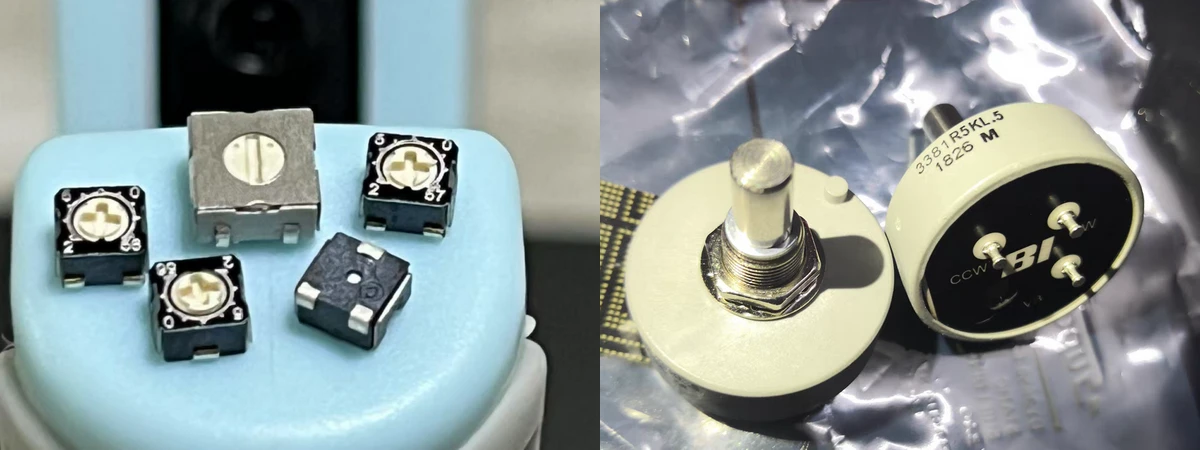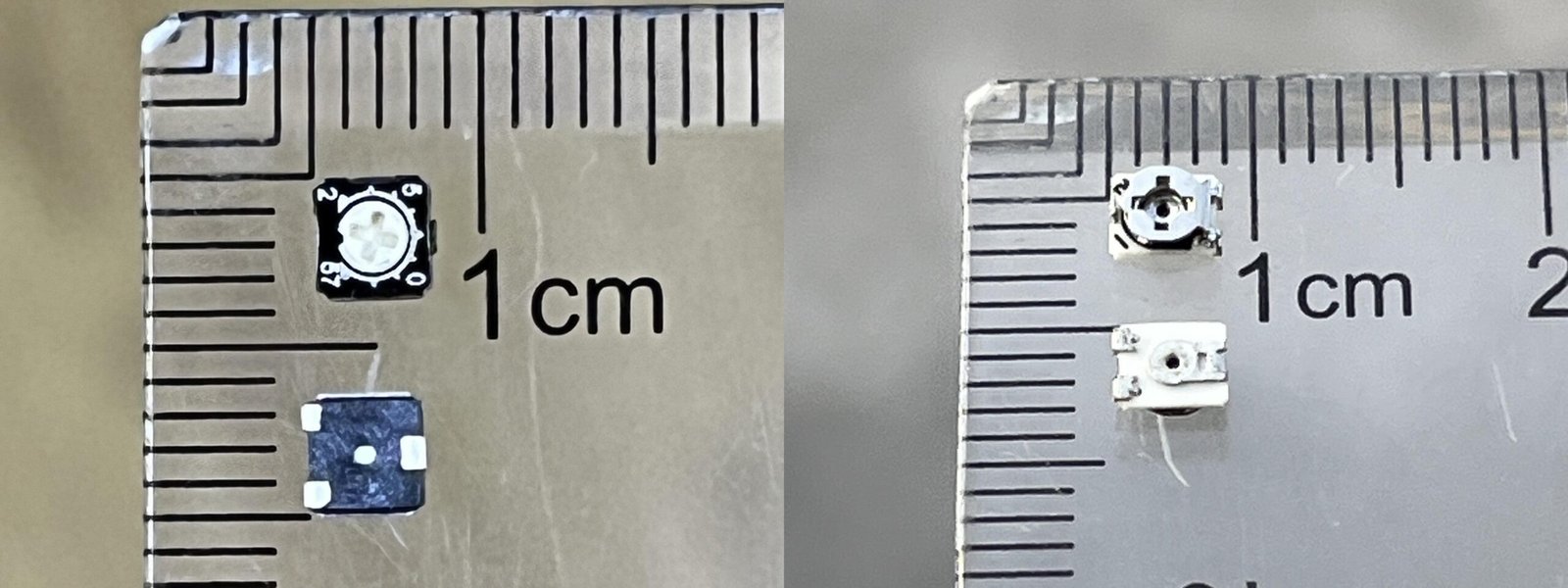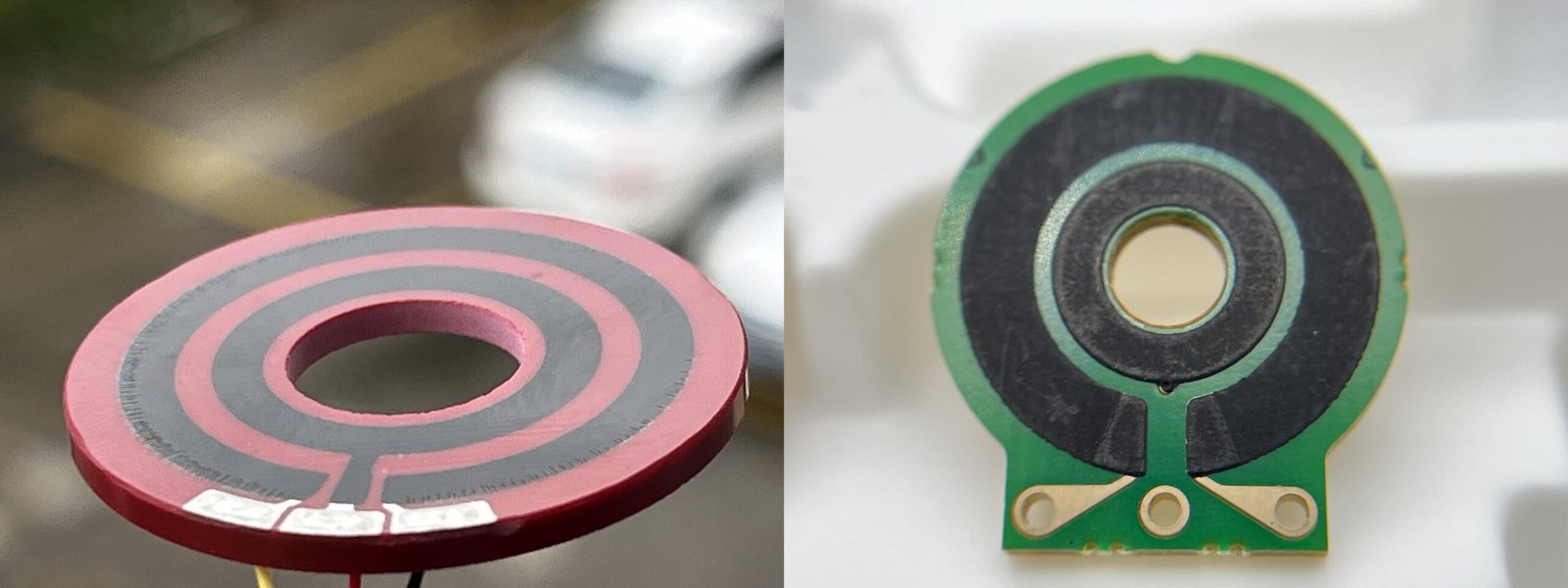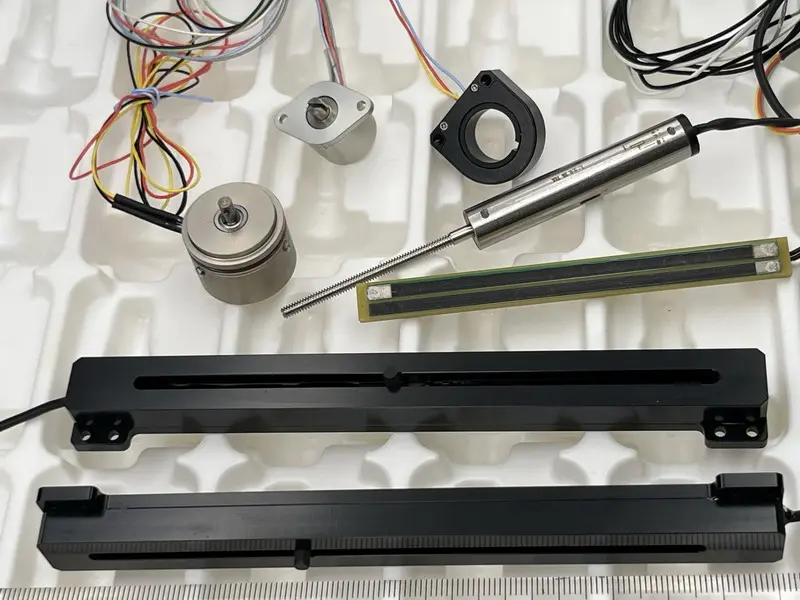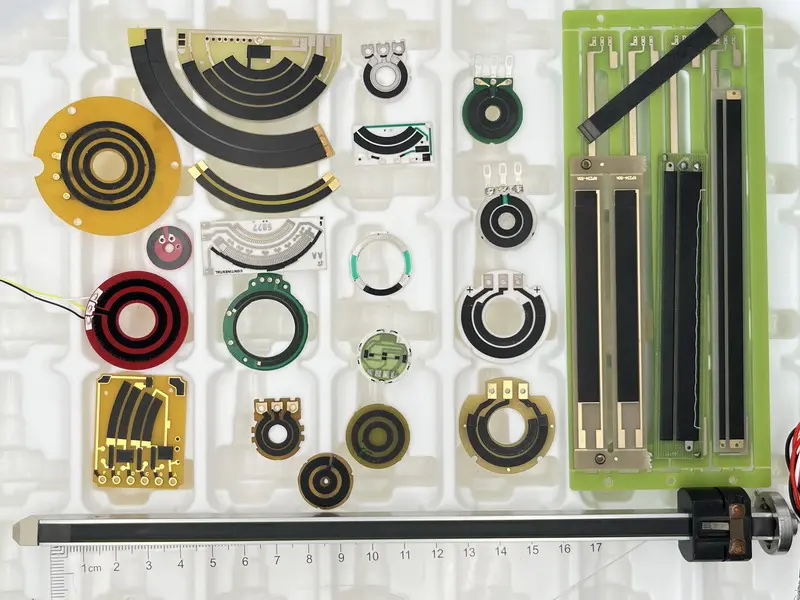When it comes to potentiometers, not all resistive elements are created equal. Two of the most important—and commonly confused—types are Carbon Film and Conductive Plastic potentiometers. While their appearance and basic function may seem similar, the underlying technology, performance, and application scenarios differ dramatically. This article breaks down the key distinctions and explains why premium models like the TE Connectivity 6915 series are classified as conductive plastic, not carbon film.
1) What’s the Fundamental Difference?
Carbon Film potentiometer elements are made by applying a thin layer of carbon or graphite onto a substrate (typically ceramic or plastic) using screen-printing or spraying. This film is then heat-cured to adhere firmly. Carbon film tracks are relatively simple and low-cost to produce, making them ideal for mass-market and consumer electronics where moderate performance is sufficient.
Conductive Plastic potentiometer elements, on the other hand, use a composite of finely dispersed carbon particles within a polymer matrix. These materials are precision-molded—often using co-molding or advanced compression molding—directly with the substrate, resulting in a seamless, uniform structure. This leads to higher uniformity, significantly longer life, and superior noise characteristics.
2) Materials and Structure: A Closer Look
Carbon Film:
- Manufacturing: Screen-printed or sprayed, then cured.
- Layer: Thin, superficial, attached to the substrate surface.
- Cost: Low-cost, suited for basic controls.
Conductive Plastic:
- Manufacturing: Polymer and carbon particles are co-molded with the substrate.
- Layer: Integrated, thick, and flush with the base material.
- Cost: Higher, reflecting greater stability and reliability.
3) Performance & Typical Applications
| Aspect | Carbon Film | Conductive Plastic |
|---|---|---|
| Manufacturing | Screen-printing, spraying | Precision molding/co-molding |
| Lifetime | Short to moderate | Ultra-long (>10 million cycles) |
| Electrical Noise | Noticeable, higher | Extremely low, stable |
| Application | Consumer electronics, basic | Military, aerospace, high-end industrial, medical |
| Cost | Low | High |
- Carbon film potentiometers are found in audio controls, household appliances, and standard consumer-grade sensors. Their primary advantage is affordability.
- Conductive plastic potentiometers are essential in demanding sectors—military, aerospace, robotics, and precision instrumentation—where long-term stability, minimal signal noise, and high reliability are critical.
4) Why the Confusion?
In many regions—especially in non-English-speaking markets—it's common to refer to both types generically as "carbon film" or "resistive film" potentiometers. However, in the electronics industry (and in English-language documentation), the distinction is strict:
- Carbon film and conductive plastic are different not only in materials but also in manufacturing process, longevity, and end-use.
For instance, the TE Connectivity 6915-1003-030 is often misidentified as a carbon film element in Chinese literature. In reality, official documentation, manufacturing method, and its performance metrics all confirm it is a Conductive Plastic Potentiometer Element.
5) Why Does It Matter?
Getting the terminology and understanding right is not just academic—it has real-world consequences:
- Performance expectations: High-end equipment that demands ultra-low noise and long service life can only be met by conductive plastic potentiometers.
- Cost and sourcing: Conductive plastic elements cost orders of magnitude more than carbon film, due to material cost, yield rates, and testing requirements.
- Application suitability: Using the wrong potentiometer type for a mission-critical system can lead to failure, downtime, or even safety risks.
6) Conclusion
In summary, while both carbon film and conductive plastic potentiometers use resistive films to provide variable resistance, the differences in their materials, manufacturing, performance, and cost are significant.
- Carbon film is for the everyday—affordable and sufficient for basic electronics.
- Conductive plastic is for the extraordinary—engineered for extreme longevity, precision, and reliability in the most demanding environments.
The TE 6915-1003-030 is not a carbon film potentiometer element, but a benchmark conductive plastic potentiometer, and that distinction is at the heart of its price and performance.
At NOLELC, we specialize in the development and manufacturing of industrial potentiometer elements—including conductive plastic, thick film, and carbon film resistor technologies. With flexible production lines and strict quality control, we deliver both standard and custom potentiometer solutions for applications ranging from automotive sensors to aerospace and military-grade systems. For fast lead times and reliable performance, our team is ready to support your next project.



